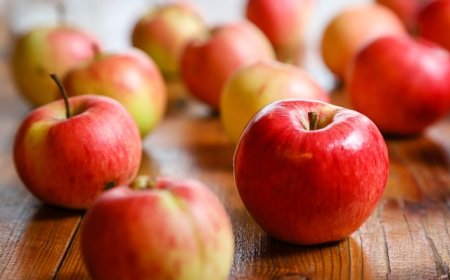Fruit Facts for Kids: Types, Health Benefits & Fun Fruit List
Learn all about fruit in this fun and educational article for students. Discover types of fruit, health benefits, how they grow, and where they're grown around the world. Perfect for grades 6–8!
🍎 Fruit: Nature’s Sweetest Gift
Fruit is one of the most important foods in the human diet. Found in a variety of colors, shapes, and sizes, fruits are the edible parts of flowering plants that usually contain seeds. Most fruits are sweet or tangy and full of vitamins, water, and fiber. They are not only healthy but also a delicious way to enjoy nature’s bounty. This article explores what fruits are, how they grow, the main types of fruits, their health benefits, where they’re grown around the world, and why they matter to both people and the planet
🌱 What Makes a Fruit a Fruit?
Botanically speaking, a fruit develops from the flower of a plant and contains its seeds. Fruits help plants reproduce by spreading seeds to new places. Animals and humans eat fruits, and in doing so, help carry seeds to the ground where they may grow into new plants.
Fruits are often confused with vegetables, but here’s a helpful tip: if it has seeds and comes from a flower, it’s a fruit. That means tomatoes, cucumbers, and pumpkins are all fruits—even though we usually treat them like vegetables!
🌍 Where Do Fruits Grow?
Fruits grow in many climates across the globe. Some fruits, like apples and pears, prefer cooler regions. Others, like bananas and mangoes, grow in warm, tropical climates. Farmers often grow fruit trees, bushes, and vines in orchards, plantations, or fields. Some fruits are also grown in greenhouses, especially in colder parts of the world.
Examples:
- Apples: Grown in the United States, China, and Poland
- Bananas: Grown in India, the Philippines, and Brazil
- Mangoes: Grown in India, Pakistan, and Mexico
- Oranges: Grown in Brazil, the U.S., and Spain
🍊 Types of Fruits
Fruits can be grouped by their physical features and how they grow. Here are some common categories:
Citrus Fruits
These are juicy, tangy, and full of vitamin C. They grow on small trees and have thick peels.
Examples: Orange, lemon, lime, grapefruit
Tropical Fruits
These fruits grow in hot, humid regions near the equator.
Examples: Banana, mango, papaya, coconut, pineapple
Berries
Small, soft fruits often eaten raw. Many are rich in antioxidants.
Examples: Strawberry, blueberry, raspberry, blackberry
Stone Fruits (Drupes)
These have soft flesh and one large seed or pit in the middle.
Examples: Peach, plum, cherry, apricot
Pome Fruits
These fruits have a central core with seeds.
Examples: Apple, pear, quince
Melons and Vine Fruits
These fruits grow on vines and are usually large and juicy.
Examples: Watermelon, cantaloupe, honeydew, grapes
Exotic Fruits
Unusual fruits from specific parts of the world, often with unique flavors.
Examples: Dragon fruit, starfruit, fig, pomegranate, lychee
🧪 Why Are Fruits Healthy?
Fruits are packed with nutrients that help the body stay strong and grow properly. They contain:
- Vitamins: Like vitamin C (for the immune system) and vitamin A (for vision)
- Minerals: Like potassium (for heart health)
- Fiber: Helps digestion and keeps you full
- Water: Keeps your body hydrated
- Natural sugars: Give your body energy
Health experts recommend eating at least 2 servings of fruit per day. A serving could be one banana, one small apple, a handful of berries, or a slice of melon.
🛒 How Do We Eat Fruits?
Fruits can be enjoyed in many ways:
- Raw: Apples, bananas, grapes, berries
- Sliced or chopped: In salads or snacks
- Juiced: Orange juice, apple juice
- Blended: Smoothies
- Cooked: In pies, jams, sauces
- Dried: Raisins, dates, dried mango
Some fruits, like lemons, are more commonly used for flavoring or cooking than eating raw.
🍽️ Fruits Around the World
Fruit is eaten in every country, and many cultures have traditional recipes made with local fruits.
- India: Mango lassi, fruit chutneys
- Mexico: Fruit cups with chili and lime
- Japan: Persimmons, melon desserts
- Italy: Fruit gelato
- Middle East: Dates, figs, and pomegranates
Global trade allows people to enjoy fruits from faraway places year-round. For example, strawberries grown in Mexico may be eaten in Canada during winter
🤯 Fun Facts About Fruits
- Apples float because they’re 25% air!
- A banana is technically a berry, but a strawberry isn’t!
- There are over 7,500 types of apples in the world.
- Watermelons are 92% water.
- Coconuts can float across oceans and grow on distant shores.
- Some fruits, like tomatoes and avocados, are used like vegetables in cooking.
- In Japan, rare melons can sell for hundreds of dollars each.
🍎 Vocabulary List
| Word | Definition |
|---|---|
| Fruit | The part of a plant that has seeds and can be eaten |
| Vitamin | A nutrient your body needs to stay healthy |
| Fiber | A part of food that helps your stomach and digestion |
| Citrus | Fruits like oranges, lemons, and limes that have lots of vitamin C |
| Berry | A small, juicy fruit like strawberries, blueberries, or raspberries |
| Antioxidant | A substance in food that helps protect your cells from damage |
| Orchard | A place where fruit trees are planted and grown |
| Tropical | Fruits that grow in hot, humid places, like bananas and pineapples |
| Harvest | The time when ripe fruits are picked |
| Pollination | The process where pollen is moved to help plants produce seeds and fruits |
👧 Kid-Friendly Summary
Fruits are colorful, tasty foods that grow on trees, bushes, or vines. They have seeds inside and come in many kinds—like sweet apples, juicy oranges, and soft bananas. Fruits are healthy because they have vitamins and fiber that help your body grow strong. You can eat them fresh, in smoothies, or cooked in yummy recipes. Try new fruits from around the world to find your favorites!




















































